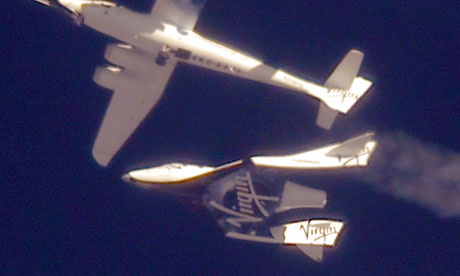What kind of public subsidies is it taking to make this venture 'profitable'?

May 19, 2012
Launching of Rocket by SpaceX Is Aborted
By KENNETH CHANG
CAPE CANAVERAL, Fla. — The launching of a privately owned cargo rocket heading to the International Space Station was aborted at the last second on Saturday morning.
The rocket’s nine engines had ignited, but computers detected a high pressure in the chamber of the center engine and shut them down The rocket is held down during the final engine checks and never left the launching pad.
The rocket and its cargo capsule, both built by the Space Exploration Technologies Corporation of Hawthorne, Calif., represent an important step in NASA’s evolution to rely more heavily on commercial companies for its human spaceflight program.
If the capsule, the Dragon, reaches the space station, it will be first commercial spacecraft to dock there. All previous vehicles, like NASA’s space shuttles and Russia’s Soyuz capsules, were government operated.
In the evening, SpaceX officials said they had identified a faulty valve as the problem and said the next launching attempt would be on Tuesday at 3:44 a.m.
The flight will be a second test in a $396 million program by SpaceX to develop the cargo ship. If successful, SpaceX will then enter a $1.6 billion contract for a dozen cargo flights to the station.
The SpaceX flight is carrying 1,000 pounds of nonessential cargo, mostly food and clothing.
NASA signed the development agreement with SpaceX in 2006 as part of an effort to encourage new commercial space ventures and to reduce launching costs for the space agency.
A second company with a NASA cargo contract, the Orbital Sciences Corporation of Vienna, Va., hopes to get its first test flight off the ground in the second half of this year.
The space agency now also wants to turn to commercial companies for the launching of its astronauts. SpaceX hopes an upgraded Dragon will capture at least some of that business. After the retirement of the space shuttles last year, NASA astronauts currently must ride on Russian Soyuz rockets to get into space.
http://www.nytimes.com/2012/05/20/sc...ef=todayspaper

May 19, 2012
Launching of Rocket by SpaceX Is Aborted
By KENNETH CHANG
CAPE CANAVERAL, Fla. — The launching of a privately owned cargo rocket heading to the International Space Station was aborted at the last second on Saturday morning.
The rocket’s nine engines had ignited, but computers detected a high pressure in the chamber of the center engine and shut them down The rocket is held down during the final engine checks and never left the launching pad.
The rocket and its cargo capsule, both built by the Space Exploration Technologies Corporation of Hawthorne, Calif., represent an important step in NASA’s evolution to rely more heavily on commercial companies for its human spaceflight program.
If the capsule, the Dragon, reaches the space station, it will be first commercial spacecraft to dock there. All previous vehicles, like NASA’s space shuttles and Russia’s Soyuz capsules, were government operated.
In the evening, SpaceX officials said they had identified a faulty valve as the problem and said the next launching attempt would be on Tuesday at 3:44 a.m.
The flight will be a second test in a $396 million program by SpaceX to develop the cargo ship. If successful, SpaceX will then enter a $1.6 billion contract for a dozen cargo flights to the station.
The SpaceX flight is carrying 1,000 pounds of nonessential cargo, mostly food and clothing.
NASA signed the development agreement with SpaceX in 2006 as part of an effort to encourage new commercial space ventures and to reduce launching costs for the space agency.
A second company with a NASA cargo contract, the Orbital Sciences Corporation of Vienna, Va., hopes to get its first test flight off the ground in the second half of this year.
The space agency now also wants to turn to commercial companies for the launching of its astronauts. SpaceX hopes an upgraded Dragon will capture at least some of that business. After the retirement of the space shuttles last year, NASA astronauts currently must ride on Russian Soyuz rockets to get into space.
http://www.nytimes.com/2012/05/20/sc...ef=todayspaper

Comment